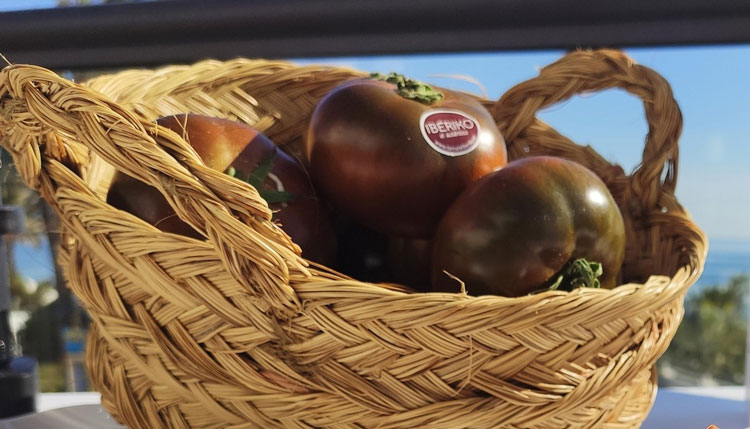The tastiest treasure of Mediterranean cuisine came from the American continent. Spain took this gift and rand with it. Five centuries later, it has become the backbone of the recipe books throughout the country. With the heat comes the time to enjoy the best qualities of this product in Paradores.
When a product earns the status of essential, it must have something special. The tomato has been with us for five centuries, enriching an infinite recipe book with its presence. It is like a Swiss Army knife, with solutions for everything – from the humble tomato seasoned only with salt and olive oil to the cornerstone of so many sauces and sautés. When we take pride in the Mediterranean diet, so far removed from the buttered European cuisine, we pride ourselves in the tomato.
The first gift is a delicious paradox: isn’t it ironic that such a Mediterranean product has such a distant origin? Its name stems from Nahuatl, spoken in Mesoamerica, and means fruit with a navel. Hernán Cortés and his troops have the honor of being the first Europeans to ever taste it. Its flavor arrived from America on those galleons laden with riches and surprises to renew the old world. Five centuries later, the tomato is the second most popular vegetable in Spain and one of the backbones of our cuisine, as each province competes with its neighbor for the best quality and tastes.

According to Mercasa (a public company in the food distribution sector), each Spaniard consumes almost thirteen kilos of tomato per year. Unsurprisingly, Paradores considers it is “unthinkable to work without this jewel of our gastronomy.” The thousand varieties that this country treasures reinforce this factual statement.
A matter of taste
The first discord that inflames the cooks is its condition of fruit or vegetable. What a priori seems a relatively trivial controversy has been taken to heart by many. The truth is that the tomato is a fruit, but in 1892 this simple matter ended up in the United States Supreme Court to turn it into a vegetable to tax its importation. Still, if we want a debate, let us focus on more important issues like which variety to choose for each dish. For that, one needs to distinguish and calibrate which type is best served raw, in salads or cold soups, and which ones are more suited for sauces or baking. Paradores advises focusing on “parameters such as flavor, texture, and acidity.” In the end, deciding between a raf, a kumato, or a beef heart tomato will depend on taste and your budget.
Summer love
In Spain, we have tomatoes all year long, but the heat is the best time to buy them, cook them, or preserve them for consumption throughout the year. Tomatoes ripened in the summer sun reach an unbeatable level of flavor and texture. That is why, as recommended by Paradores, “summer recipes bring out their greatest potential allowing us to better appreciate their flavor and quality.”

There are around ten thousand known tomato varieties in the world, and about ten percent are grown in Spain. When looking for utmost delicacy, as does Paradores, there is only one way: to work with seasonal and local products: “We use the best quality varieties, which are grown in each establishment’s geographical area. In Cadiz, it is Conil tomatoes; in Almeria, raf or iberiko; and in Malaga, the bull’s heart tomato. And so on in each province. The produce comes from local agricultural companies held to the highest standard – so close and so good.
Thanks to this magnificent raw material, half the work is done. However, Paradores has a sacred commandment for the remaining half: treat the product with the utmost respect and make the most of it to honor our culinary tradition.
From then on, it’s just a matter of enjoying what the season brings. In the summer, the sensible thing to do is to go for cold dishes such as salads or cold soups – gazpacho or salmorejo-. And afterward, impeccable sauces and stews that, at Paradores, will always leave the best taste in the mouth.






